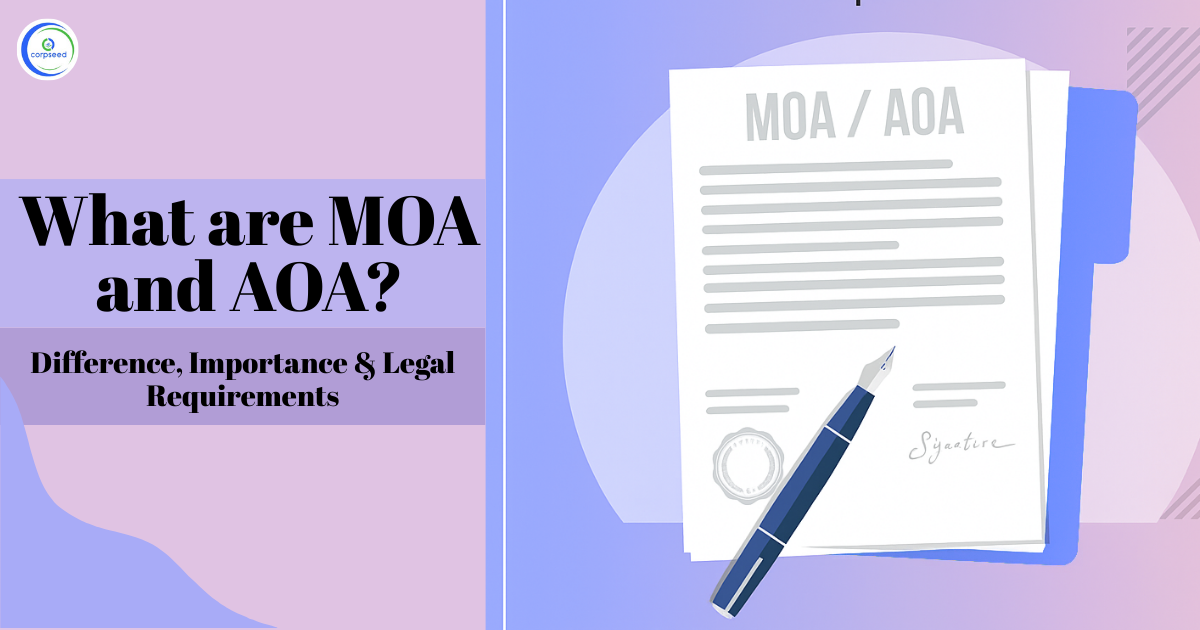What is Company Registration?
Company Registration under the Companies Act 2013 is mandatory. The below mentioned process will walk you through the whole process of company registration in India, including all associated costs, documents, and compliances that need to be followed subsequently.
Understanding the Company Registration Process is very critical to legally incorporate and operate a Company in India. Basically, the process seeks to provide a different legal identity to the company which will benefit it in multiple ways. For instance, the business can hold a bank account in its name for all its organizational transactions. In addition, it is a juridical person and is treated as a separate taxable entity under the Act of Income Tax. This would limit the liability of the owners for using their financial credentials for their respective businesses.
Table of Contents
--------------Blog Contact Form-------------
Like any legal person, the company may contract and sue in its name; the owners of the company need not use their names for this purpose. However, the biggest advantage is that there is complete transparency in the company's data and financial information. Every company's data is publicly available for viewing and inspection on the MCA portal. This makes the entity more reliable and credible to investors, customers, creditors, and Government agencies.
Knowing the Company Structure
Before getting deep into the registration process, let's understand what types of companies you can set up in India:
- Private Limited Company: A legally distinguished entity with liability limited for its shareholders and a maximum of 200 members; it is best for small to medium-sized businesses.
- Public Limited Company: Can issue shares to the general public and has to have a minimum of 7 shareholders. This type is applicable for bigger businesses intending to raise capital from the public.
- One-Person Company: Enables a person to form a company, conferring limited liability upon a single person while at the same time enjoying the privileges of the company format.
- Limited Liability Partnership: Combination of flexibility in partnership with the advantage of limited liability.
Company Registration in India: Step-by-Step Procedure
To start a Private Limited Company, the members or promoters need to meet certain minimum requirements for the number of shareholders, directors, name, and registered address as enumerated in the table below. After the requirements are met, the promoters will have to get the Company formally incorporated by the Registrar of Companies. This is essentially an application-based process, and we have discussed a stepwise guide to it below. Follow the guide for complete documentation and the process of company registration.
Step 1: Obtain DIN & DSC of Promoters
A prerequisite to starting the process for company registration is that all directors of the Private Limited Company should have their DIN or Director Identification Numbers. Application for Director Identification Number is done by filling up form DIR-3, which can be downloaded from the MCA website, with attachments of PAN, Address Proof, and Photograph. Also, the authorized director should have a Digital Signature of Class 3 for signing the online company registration application.
Step 2: Select & Reserve Company Name
The name of your company cannot be any word. It has to reflect your brand and the business activity in order to identify your business by your customers accordingly. Moreover, the name shall also comply with the MCA guidelines and shall not be identical or similar to the name of an existing Company, LLP, or a registered trademark. You may contact us to check your company's name before registration. After you are convinced that your company's name is not against the provisions, get it approved and reserved by the ROC.
For reservation of the company's name, an application in SPICE Plus PART A form may be filed to the ROC. The applicant can suggest two names per application at a fixed government fee of Rs.1,000. After careful examination, the proposed names are going to be reserved by the ROC for the Company. Upon Name Reservation, the Company receives a Name Approval Letter, which would be valid only for the next 20 days. The applicant must ensure that the Company Registration process gets completed within its validity.
Step 3: Draft MOA & AOA
The MOA and AOA of the Company are two important legal documents that have to be filed with the ROC for registration. These have to be drafted on an appropriate value stamp paper and signed by all shareholders in the presence of a Public Notary. The notary will then stamp the documents on which stamp duty and notary charges will have to be paid. MOA, also known as the company's charter includes basic legal information. AOA, on the other hand, includes rules and regulations of internal management.
Step 4: File SPICE Plus Application
SPICE Plus or INC-32 is an online application submitted for the registration of a company in India. All in all, it gets divided into PART A & PART B. As mentioned above, PART A is filed for Name Approval of a Company. PART B is an integrated application used for company incorporation. You can fill out this form and submit it on the MCA website to get your company registered by the ROC.
Step 5: Get the Company Registration Certificate
The SPICE Plus application, along with its attachments and fees is scrutinized by the ROC. The ROC, on satisfying itself about the veracity of all the information, undertakes the Company Registration. The ROC registers the Company and obtains a Certificate of Registration in the name of the company. The Registration Certificate mentions the CIN or Corporate Identification Number as the unique identification for the company. Also, along with the Certificate, a PAN and TAN are allotted in the name of the Company.
Time Taken for Company Registration Process in India
The length of time taken for the company registration process in India varies based on several factors. On average, it generally takes about 10 to 15 working days for completion. However, the subject timeline may be extended as per the completeness of information in the application and the documents submitted together with the accuracy thereof, approval availability, and the workload at the end of the concerned RoC. Take note that the process may take longer should more clarifications or modifications in the application be called for during the scrutiny.
Documents Required in the Company Registration Process
Documentation is a very critical aspect of the Company Registration process in India. Without the submission of adequate, accurate, and updated documents, the chances of your application getting approved and your company getting successfully registered are almost nil. Here's the list you must follow while preparing the documents for Private Limited Company Registration.
- Documents of promoters: They are the first shareholders and directors of a Company who show interest or contribute to the foundation of the company. All these promoters have to present a few personal documents in regard for registration. Some include their PAN cards, Adhar Cards, latest utility bills as Address Proofs, and passport-size colored photographs.
- Registered Office: The registered office is the address with which the company gets registered or incorporated. The proof of the address of this location has to be submitted for company registration. Utility bills in the name of the company can be made available for this. Ensure that such bills are recent and not older than 2 months from the date of application. This apart, the owner of the office property will have to issue a No Objection Certificate in the Company's name.
- Legal Drafts & Forms: Legal Documents like the Company's Memorandum of Association and Articles of Association also have to be prepared/drafted and submitted for Company Registration. Where MOA contains basic and foundational legal information of the company, AOA documents all its internal rules and regulations. These documents should be stamped, notarized, and signed by all the shareholders. Apart from these, forms DIR-2, INC-9, and INC-14 have to be filed. DIR-2 confirms that the concerned director consents to act as the same in the company. INC-9 and INC-14 contain declarations by first directors and a practicing professional respectively.
Compliance After Incorporation
After the incorporation of the company, it is important to follow up on compliances related to its continued existence:
- Annual General Meetings: Annual general meetings shall be held in compliance with the statute and file the annual return with the ROC.
- Financial Statements: Maintain proper annual financial statements and accounts and filing of the same.
- Audits: The Company shall hold an audit per the Companies Act, 2013 requirements.
Conclusion
Registration of a company in India is an elaborate process, yet simple if carried out methodically. Follow this guide as you go through the process and lay a sure foundation for your business. Right from obtaining DSCs and DINs, some very important steps need to be followed regarding post-registration compliance to ensure the smooth running of the company within the legal parameters set by India's vibrant business environment.
This portion of the site is for informational purposes only. The content is not legal advice. The statements and opinions are the expression of author, not corpseed, and have not been evaluated by corpseed for accuracy, completeness, or changes in the law.
BOOK A FREE CONSULTATION
Get help from an experienced legal adviser. Schedule your consultation at a time that works for you and it's absolutely FREE.








.png)
